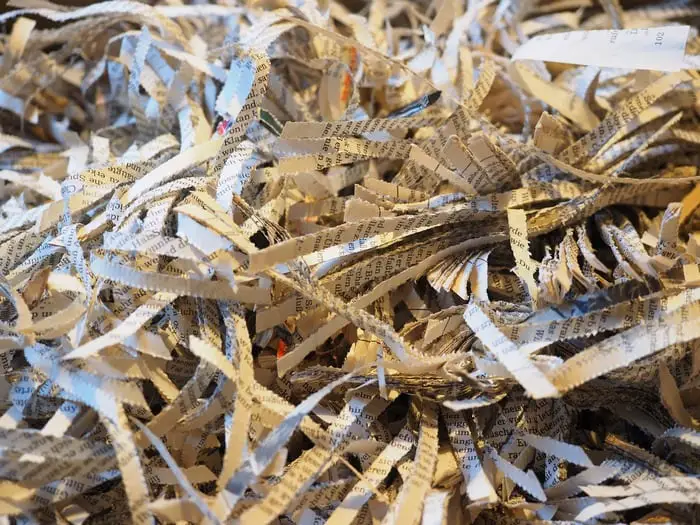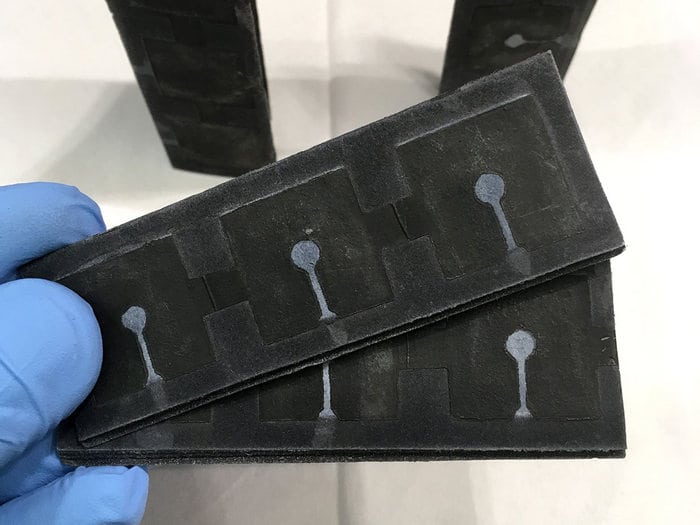The dream may be for a paperless office but the reality is very different. Vast amounts of paper are consumed every day – in offices, retail establishments and homes. And while a lot of that paper is recycled, unfortunately, huge amounts go to landfill.

In most cases, the paper that’s gone to landfill will break down and even benefit the soil in which it’s buried. The same can’t be said of batteries. Millions end up in landfill every day – some through ignorance, some through laziness and the remainder because there is no available alternative.
Those batteries contain some of the most harmful compounds imaginable. Lead. Cadnium. Mercury. Nickel. Eventually, the casing that contains those chemicals will break down and allow leaching into the surrounding ground.
In 2016, an estimated 1.5 BILLION smartphones were sold. Every one of them has a battery that will be lucky to last three years. Assuming a typical battery size of around 30cm2, that adds up to some 52,735 cubic metres of serious environmental concern. And that’s just phone batteries!
Paper + Bacteria = Battery

Photo: Seokheun Choi
Suddenly, office paper is turning heads. Well, at least as far as electronics and batteries are concerned.
The explosive growth of miniaturized electronics and batteries to power everything from ingestible health care devices to sensors for intelligent transportation is driving innovation in how those devices are designed and raising concerns over their environmental impact.
By some estimates, more than 50 billion electronic devices may be deployed during the next five years. Many will have a short working life, their fast obsolescence resulting in a disposal issue.
Papertronics offer electronics engineers the benefits of flexibility, sustainability, eco-friendliness, and low cost
Enter papertronics, which offer electronics engineers the benefits of flexibility, sustainability, eco-friendliness, and low cost, as well as useful mechanical, dielectrical, and fluidic properties.
Seokheun Choi, associate professor in the department of electrical and computer engineering at the State University of New York at Binghampton, and his colleagues have created a paper-based, single-use battery that relies on bacteria both to generate an electric current and also to devour the battery at the end of its useful life.
In a paper published in the journal Advanced Sustainable Systems, the authors write that lithium-ion batteries and supercapacitors offer a high energy density, are lightweight and are capable of being integrated into flexible substrates. But they point out that Li-ion batteries also are made with nonbiodegradable and often toxic materials that often require energy-intensive and potentially environmentally damaging manufacturing processes.
Alternative energy harvesting techniques such as solar cells, nanogenerators, and thermoelectric generators contain large amounts of nonrenewable and nonbiodegradable heavy metals and polymers.
Good-old-fashioned office paper may offer a more sustainable option, Choi argues, once some sophisticated engineering is applied.
Innovative engineering techniques can be used to manipulate the diameter of paper’s cellulose fibers, smoothing out roughness and controlling transparency to enable a number of applications. Combining paper with organic, inorganic, and biological entities widens the range of engineering possibilities and makes paper a viable platform for next-generation electronics.
Choi’s work focuses on integrating bacteria into paper both to generate electricity and to dispose of the battery
Choi’s work, funded in part with a US $300,000 grant from the National Science Foundation, focuses on integrating bacteria into paper both to generate electricity and to dispose of the battery. His initial work, first reported in 2015, created a paper-based battery. His most recent report, which was presented 19 August at the 256th National Meeting & Exposition of the American Chemical Society, describes how the biobattery can be activated and how its shelf life can be improved. His report also explains how on-demand energy can be delivered even in places with no electricity to power a light-emitting diode and an electric calculator.
In the lab, the bacteria-based battery uses respiration to convert the biochemical energy stored in organic matter into biological energy. The process involves a cascade of reactions through a system of electron-carrier biomolecules which transfers electrons to a terminal electron acceptor, an anode.
To create the battery, the research team placed freeze-dried “exoelectrogens” on paper. They explain that exoelectrogens are a type of bacteria that can transfer electrons outside of their cells. The electrons pass through the cell membrane and make contact with external electrodes to power the battery.
To activate the battery, the researchers added water or saliva, both of which revived the bacteria
To activate the battery, the researchers added water or saliva, both of which revived the bacteria. In the lab, the microbial battery produced a maximum power of 4 µW/cm2 and a current density of 26 µA/cm2, which Choi says are “significantly higher” than previous paper-based microbial batteries. Even so, the power performance is “very low,” limiting their application, at least for now. To be viable for commercial use, the power/current density must be improved by a factor of around 1,000, Choi says.
“The beauty of using paper as a device substrate is that you can simply stack or fold them for serial or parallel connection,” Choi says. Origami techniques may be particularly useful.
As part of his earlier work in 2015, Choi created an origami-inspired battery which folds into a square the size of a matchbook. It used an air-breathing cathode created with nickel sprayed onto one side of a piece of office paper. The total cost of the device was five cents.
The paper battery currently has a shelf life of about four months. Choi says that his latest hybrid paper-polymer biobattery readily decomposes in water.
Choi and his colleagues are not alone in working on paper-based batteries. In 2017, a metal-free and biodegradable redox flow battery for portable single-use applications was described by researchers from Spain, Canada, and the U.S. After their cellulose-based battery operated for 100 minutes, it was disposed of in soil by microorganisms, similar to the way a backyard compost pile works. Choi says that a potential drawback to that approach is that the battery’s biodegradability depends on favorable landfill conditions.
Choi is working on conditions to improve the survival and performance of the freeze-dried bacteria, enabling a longer shelf life. He also has applied for a patent for the battery and is seeking industry partners for commercialization.
This article was originally published in Spectrum IEEE






